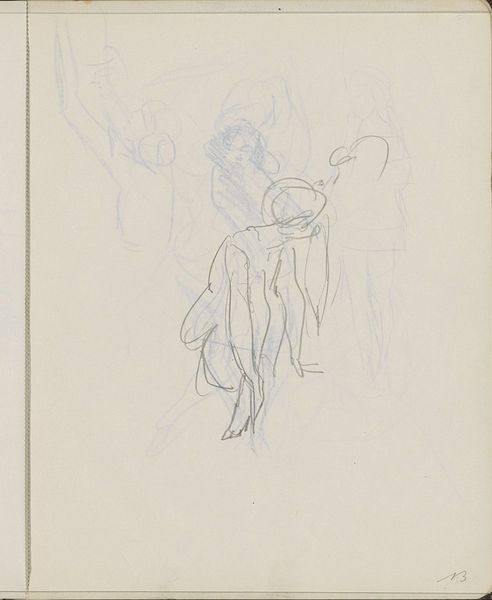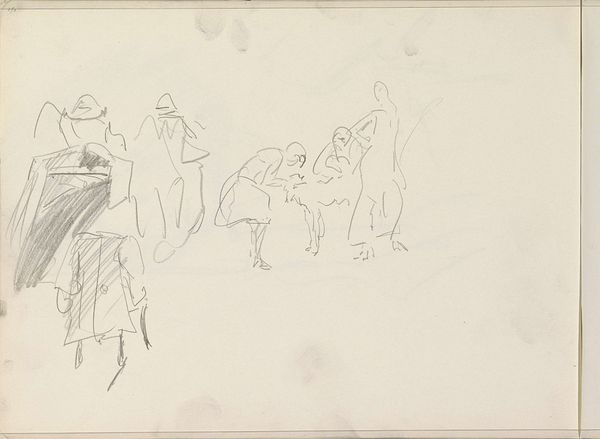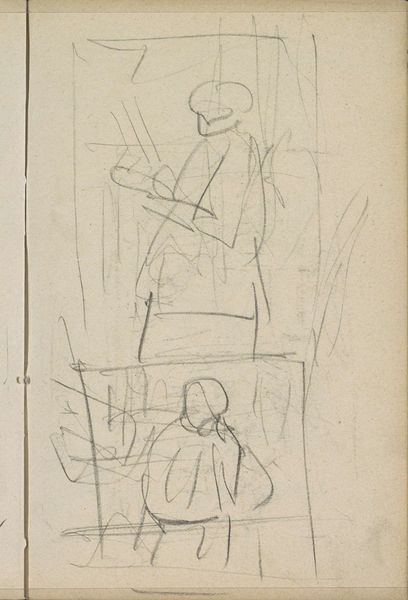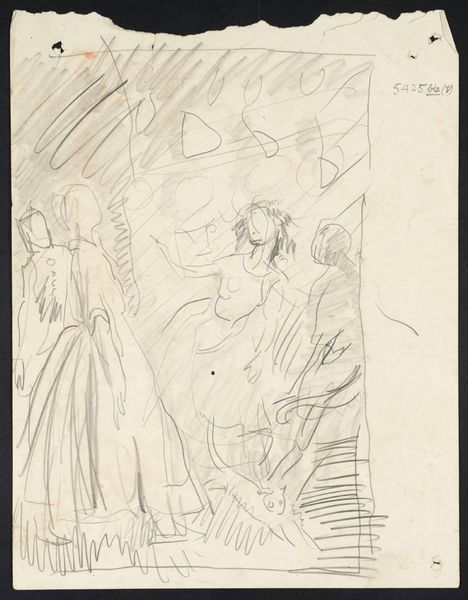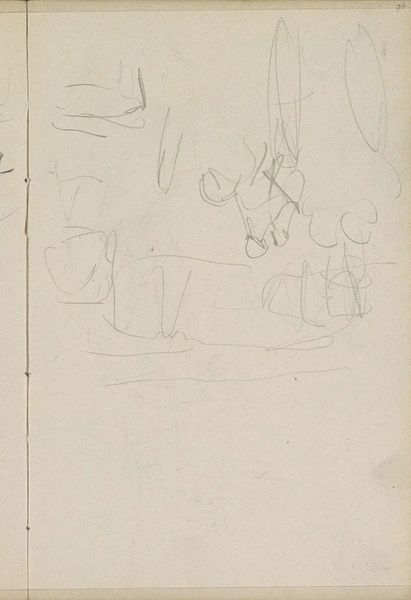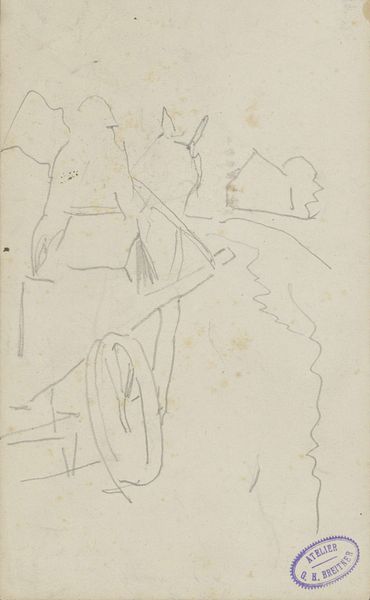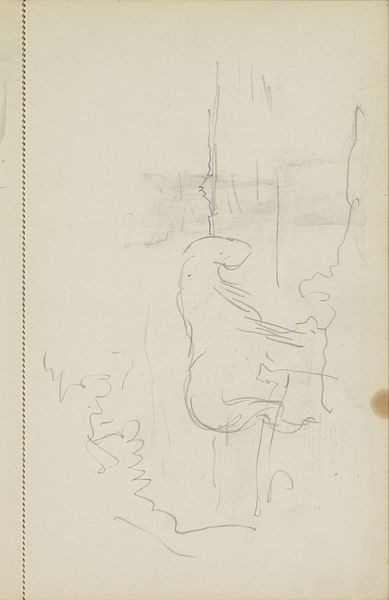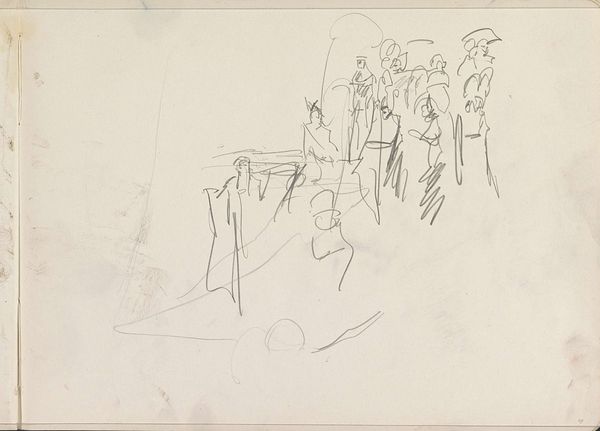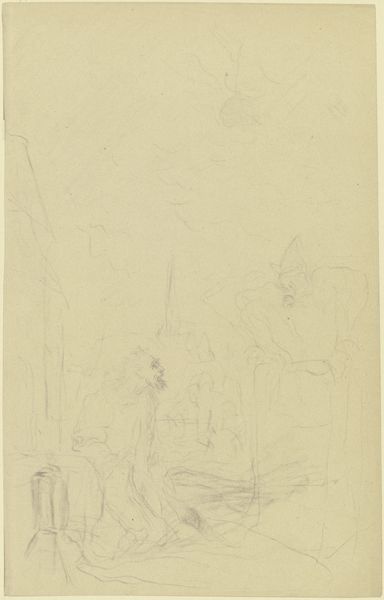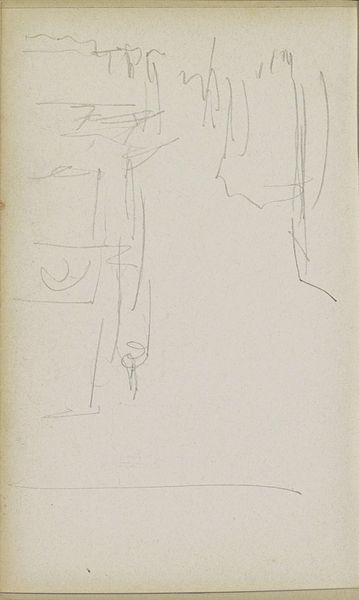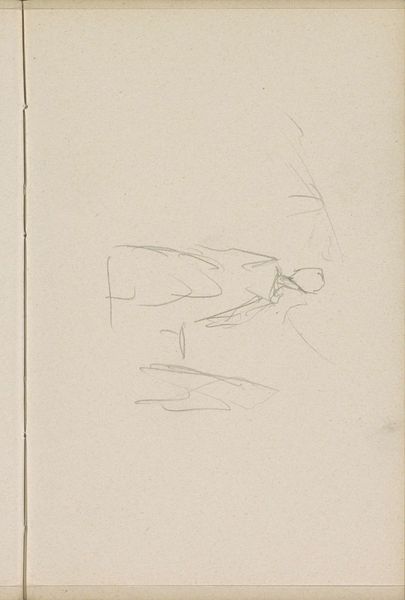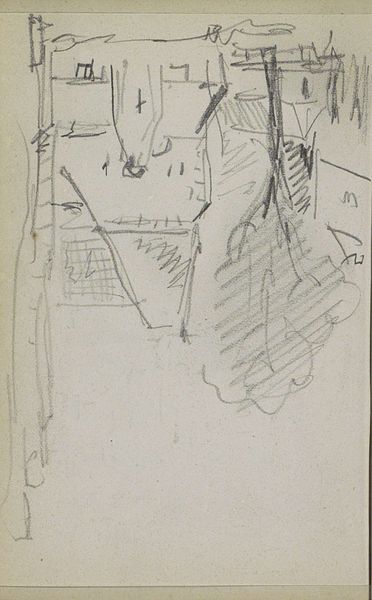
Copyright: Rijks Museum: Open Domain
Editor: This drawing, "Figuurstudies" by Isaac Israels, dates sometime between 1875 and 1934. It’s a pencil drawing. It feels so fleeting and incomplete, almost like a ghost image. What do you make of it? Curator: For me, this piece invites a consideration of artistic labor itself. Think about the repetitive act of sketching, the countless hours Israels must have spent simply practicing, refining his technique with the humble pencil. Editor: That's an interesting perspective, I didn't consider labor. How does the choice of such simple materials factor in? Curator: Precisely. Pencil, paper – these are inexpensive, readily available materials. It's a study, not intended for grand display but created within the studio space as an experiment. We often overlook how artists utilize such commonplace tools to construct 'high art,' the very means of production itself becomes blurred with the work. Editor: So you are seeing this as highlighting the 'making of,' rather than the final ‘product’? Curator: Absolutely! It disrupts this perceived hierarchy, bringing attention to the material and labor that constitutes what we ultimately value. It forces you to consider who has access to the materials and means to even create in the first place. Do you see how Israels focuses almost exclusively on figures, potentially investigating poses, volume, and mass with this medium? Editor: I think I understand better. It shifts the focus from the romantic idea of the artist as a genius to the artist as a worker, engaging with the materials. Curator: Precisely! We also can look to contemporary issues like material scarcity, artistic cooperatives and ethical practices in our modern practices today. So much information comes forward simply looking at this simple work through a modern lens. Editor: That’s given me a lot to think about, looking past the surface to see the labor within. Thank you.
Comments
No comments
Be the first to comment and join the conversation on the ultimate creative platform.
